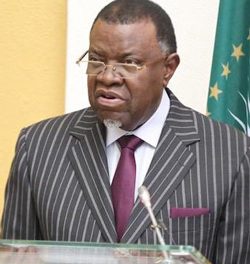
Radio spectrum allocated for global flight tracking
An agreement was reached at the World Radiocommunications Conference in Geneva on the allocation of radio frequency spectrum for global flight tracking in civil aviation, earlier this week.
The frequency band 1087.7-1092.3 MHz has been allocated to the aeronautical mobile-satellite service (Earth-to-space) for reception by space stations of Automatic Dependent Surveillance-Broadcast (ADS-B) emissions from aircraft transmitters.
This agreement follows the disappearance and tragic loss of Malaysian Airlines Flight MH370 in March 2014 with 239 people on board, which spurred worldwide discussions on global flight tracking and the need for coordinated action by ITU and other relevant organisations.
In its special meeting on global flight tracking, which took place in Montréal, 12-13 May 2014, ICAO encouraged, the leading United Nations agency for information and communication technologies, ITU to take urgent action to provide the necessary spectrum allocations for satellites to support emerging aviation needs.
In October 2014, the ITU Plenipotentiary Conference meeting in Busan, Korea, instructed WRC-15 to consider global flight tracking in its agenda. ITU Secretary-General Houlin Zhao said, “In reaching this agreement at WRC-15, ITU has responded in record time to the expectations of the global community on the major issue concerning global flight tracking. ITU will continue to make every effort to improve flight tracking for civil aviation.”
“The allocation of frequencies for reception of ADS-B signals from aircraft by space stations will enable real-time tracking of aircraft anywhere in the world,” said François Rancy, Director of the ITU Radiocommunications Bureau. “We will continue to work with ICAO and other international organizations to enhance safety in the skies.”
Established in 1865, the 150-year old ITU is the leading United Nations agency for information and communication technologies, driving innovation in ICTs together with 193 Member States and a membership of over 700 private sector entities and academic institutions.
The frequency band 1087.7-1092.3 MHz is currently being utilized for the transmission of ADS-B signals from aircraft to terrestrial stations within line-of-sight. The World Radiocommunications Conference (WRC-15) has now allocated this frequency band in the Earth-to-space direction to enable transmissions from aircraft to satellites. This extends ADS-B signals beyond line-of-sight to facilitate reporting the position of aircraft equipped with ADS-B anywhere in the world, including oceanic, polar and other remote areas.Meanwhile, the World Radiocommunications Conference is in session, 2-27 November at the International Convention Centre Geneva (CICG).











































